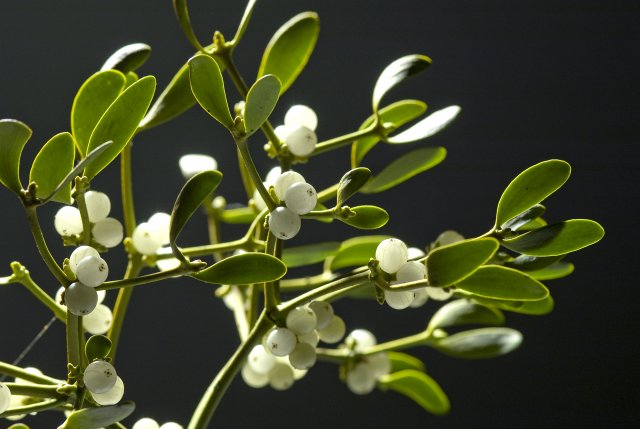MISTLETOE
AGENTS
Mistletoe contains an array of different mineral and organic agents. Two substances found in mistletoe are of particular pharmacological interest: viscotoxins and mistletoe lectins.
Since mistletoe is connected to the water transport system of its host tree, it absorbs the minerals dissolved in the water drawn up from the ground by each type of tree in its respective specific ratio.
Especially in spring the organic substances drawn up by the tree in the ascending sap are absorbed by mistletoe. These include amino acids, low-molecular sugar as well as secondary metabolites of the plant, which form the basis for host-depending qualities of the mistletoe together with the minerals.
Viscotoxins and mistletoe lectins, however, are proteins produced by mistletoe. Their concentrations vary among the different mistletoe subspecies and depend on the host tree on which they grow. Viscotoxins reach their highest concentration in the young leaves during summer, while the highest concentration of mistletoe lectins can be found in the older stems during winter.
